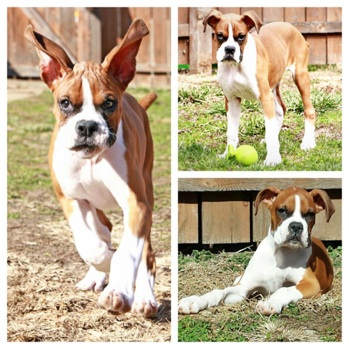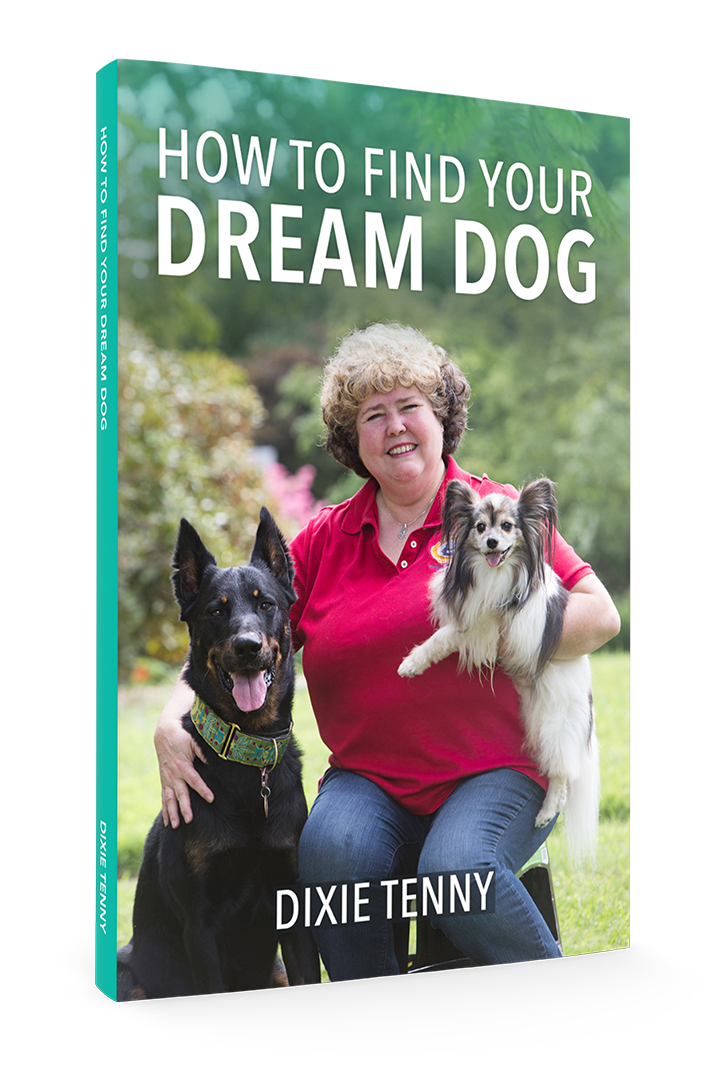Puppy trainers are often asked what kind of exercise is best for young puppies. The answer is, puppy-directed exercise.
Puppies have bodies that are growing and changing every day. Their soft joints are easily injured by impact such as jumping, leaping, and running on hard surfaces.
Those growing bodies also mean that puppies can be graceful one day and clumsy the next. Just because a puppy seems coordinated enough for certain activities does not mean he’s really ready for structured exercise yet.
If puppies are given the opportunity to choose their own games, they can self-regulate so that they do not harm their bodies.
Best games and exercise for puppies:
Playing with other puppies and puppy-friendly adult dogs. This does not mean a Lord of the Flies free-for-all with ten other puppies in puppy class, which can do more harm than good. Playing with one to three other puppies who have similar play styles and energy levels is ideal. Puppy-friendly adult dogs can exercise puppies while also teaching them vital dog etiquette play skills.
Chasing and tugging toys, with limits. Puppies can easily be over-aroused by humans who encourage them to play too hard or too long. Watch carefully for signs that your puppy is tiring — the first moment of hesitation to retrieve a toy or pick up a tug is the signal to stop there. One often-missed sign of puppy tiring is what appears to be ‘distraction’ — the puppy starts to sniff the ground instead of engaging with the toy. This is a message that the puppy needs a break.
Rules for chase: Play with two identical or very similar toys. Toss one for the puppy to chase (not too far!). When the puppy is close to you but not all the way back, bring the second toy out from behind you and wave it engagingly until the puppy drops the first toy. Immediately toss the second toy. Pick up the first and repeat.

Photo Credit: Marisa Eash

Rules for tug: Use a tug toy you can hold at both ends while puppy tugs at the middle. The human does not tug! You hold the toy in place and let the puppy tug. This prevents too-strong tugging by the human that can hurt the puppy’s neck and shoulders. Your resistance is enough. Take frequent breaks during tugging by pulling the tug toy against your legs and saying a verbal cue such as ‘out.’ Do not move until the puppy tires of this boring game and drops the tug. Immediately offer the toy again, with a cue such as ‘tug it!’ Repeat. Your puppy will quickly learn that the sooner he drops the toy when he hears ‘out,’ the sooner the game will start again.
Rules for chasing a whippit toy (a plush toy on a string tied to a pole): Stand still and drag the toy in a big circle for the puppy to chase. Do not lift the toy into the air. This is a chasing game, not a jumping game at this young age. Resist the urge to make your puppy run too fast or twist and turn. Simple circles are good, safe exercise for young puppies. When puppy catches the toy (which can be frequently) exert gentle resistance on the line until the puppy’s grip loosens and the toy comes out of his mouth. Repeat.
Chewing. This might not seem like exercise to you or me, but think of chewing as the puppy equivalent of taking a challenging exam: it’s tiring! Providing your puppy with safe raw bones, antlers, food-stuffed Kong toys, and other interesting chew items will help him burn off energy.
Exploring. Another activity that is great for young puppies is exploring new environments. Avoid areas where unvaccinated dogs might have left contaminated urine or feces. But even a friend’s back yard is a fun, safe new place to sniff and explore. Just as traveling is tiring for us, exploring new areas is fun but tiring for puppies.
Sniffing games. Informal games where you hide treats and toys for your puppy to find are wonderful physical and mental exercise. And consider the sport of K9 Nose Work. Scent detection can be learned at any age, and can lead to titles for your puppy and perhaps a brilliant career!
Activities to avoid
Anything where you, not the puppy, regulates the exercise. Do not run with your puppy on leash. You will certainly miss signs that your puppy needs a break. Sometimes people think that because a puppy seems to have boundless energy, it’s okay to run with them. It isn’t. Puppies actually race around and then rest, they do not run steadily over long distances. I was horrified when a puppy class student revealed that he and his wife roller-bladed with their young golden puppies on leash. Sure enough, by a year of age, those dogs already had bone and joint problems.
All jumping, leaping, twisting activities. Your puppy’s body is growing and changing too quickly for these exercises to be safe. Keep anything you throw for your puppy low to the ground.
Roughhousing and wrestling games. These games are unwise at any age. They teach the puppy to interact with humans in a way that can become dangerous as the puppy grows up.
Adolescent dogs are still growing and changing. Please check with your veterinarian before starting any activities with your young dog that involves impact, such as jumping or running on leash.
There are so many ways to have fun with your puppy while you keep him safe from harm. Enjoy!

By entering your name and email below, you'll grab the Introduction of
How to Choose Your Dream Dog for FREE
How to Choose Your Dream Dog for FREE

I have read the first 70 pages and thoroughly enjoyed it. It is well written and down to earth. It led me to know what I needed to be looking for after I had decided I want a dog.